On the weekend of 15 & 16 March 2014 the 10th National Exhibition of Australian Plants as Bonsai was held at the Australian National Botanic Gardens in Canberra. This was a ideal opportunity to view Australian native plants as bonsai, and also to get some inspiration and information on how to accomplish the transition of Australian native plant to bonsai. Being held at the Australian National Botanic Garden also gave visitors the ability to see the same plants in nature.
It was a lovely day but the crowds were not to the number I expected, but that allowed me a better look at the exhibition. As is the case with many exhibitions, the lighting was not great and that made it difficult to fully appreciate the bonsai on display, and even more difficult to take quality photos. So please excuss the darker area around the lower trunks and pot, but enjoy the photos.
This Callistemom was grown from nursery stock obtained in the 1980’s and was grown for many years as a potted garden tree. The first bonsai styling was in 2000 and it is continuing to improve with time.
This Melaleuca ericifolia is only about 10 years old and has been in training since 2009.
This Baeckea’s size belies its age of 24 years. The pot recalls the the rocky cliff edges where it started its life.
Allocasuarina torulosa is in a unique pot that is made from cork bark (Quercus suber) sections being glued to a fibreglass slab and waterproofed on the internal surface
The real name is Gymnostoma australianum and is closely related to the casuarina family and is only four years old.
This Lilly Pilly (Syzgium smithii var. minor) has been in training only since 2012 and came from Coffs Harbour for the exhibition.
This Callitris glaucophylla is about 26 years of age and has been in training for nearly that long. It is now taking on the weeping shape that the tree naturally shows in nature.
The Silky Oak (Grivillea robusta) above has been in training since 2005 and is usually maintained by the clip and grow method.
Common names are sometims a bit misleading, and this one is no exception. The botanical name is Callistris endicheri and is about 12 years of age.
Only approximately four years old, this Kunsea Badja Carpet goes to show that native Australian material can become a convincing bonsai in a short period of time.
This bonsai was one of the highlights of the exhibition this year for me. The branching shape with its spiraling features gave it a very dramatic appearance. You could see the flower buds starting to form so flowering in the spring should be spectacular.
This Melaleuca bracteata was another standout for me, and was another of my favourites of the exhibition.
In training since 2006, this Callistemon viminalis “Dawson River weeper” was nicely presented.
Eucalyptus paniculata is of unknown age but in training only a short time and yet so refind is a credit to the artist. We look forward to its continued progress over the coming years.
This is a large bonsai (Banksia integrifolia) that belies its age of only about 40 years. In training since about 1992 it has been progressively put into larger pots as it has matured. A great example of Australian native bonsai and is in its own right a feature of Australian bonsai.
Ficus rubiginosa “Little Ruby” was discovered/developed by a Sydney bonsai artist and its striking feature is the small leaves in comparison to the usual size of the Port Jackson fig leaves.
Melaleuca linariifloria has been in training since about 1990 and swallowed a rock beside which it started life and careful examination is now needed to discern the differences.
Acquired in a general nursery about 16 years ago, this Eucalyptus sideroxylon “Rosea” was planted over a rock in about 2002.
Eucalyptus elata has stunning nearly white trunk and looks like a tree that can be seen in the bush. An excellant example of art imitating nature.
Callistemon viminalis “Captain Cook” has only been in development a short time and shows that Australian natives are quick to adapt to standard bonsai conditions and practices.
Although this bonsai is about 35 years of age, the species is not known (Callistemon sp.?) however it is still a fine representation of a well developed bonsai.
This is a small (shohin) bonsai and is Kunzea “Snowman” so named beacuse of the flower colour.
The botanical name of this bonsai is Leptospermum nitidum “Cooper Sheen” and is so named because of the cooper sheen of its new growth which can be seen in the photo.
The beautiful fissured bark of Allocasuarina littoralis is this species great feature.
This Tea Tree is Leptospermum morrisonii “White Opal” and is only about 15 years of age.
I have saved my favorite bonsai until last. Leptospermum laevigatum is almost 25 years old and has been in training nearly all its life. Grown mainly by the clip and grow method and the artist assures us that the style has just emerged over the years.

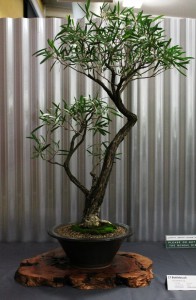
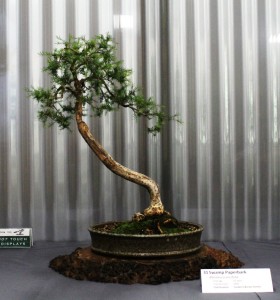
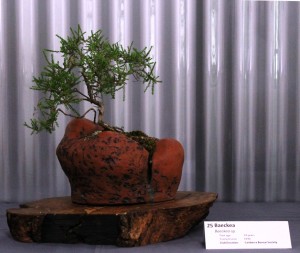
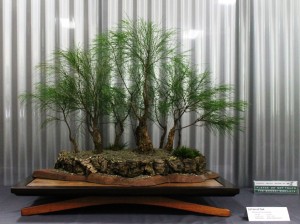
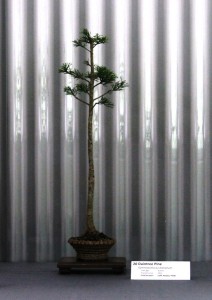
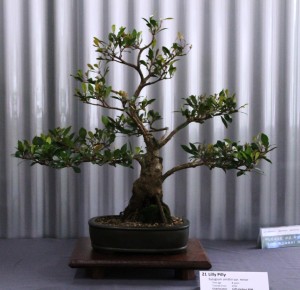
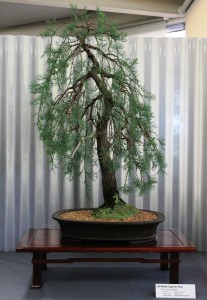
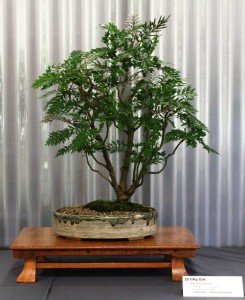
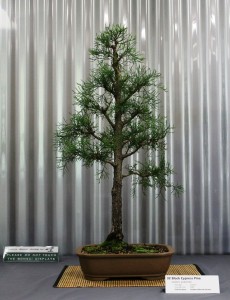
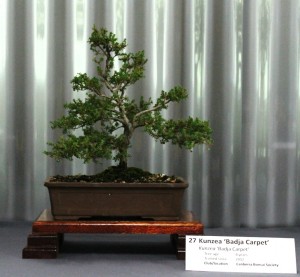
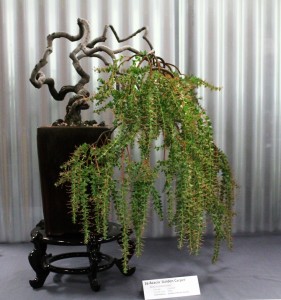
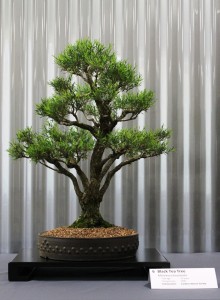
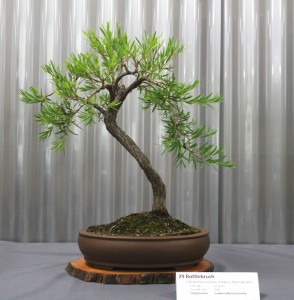
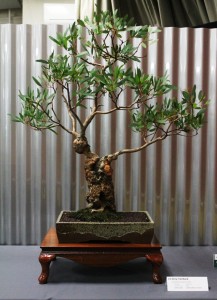
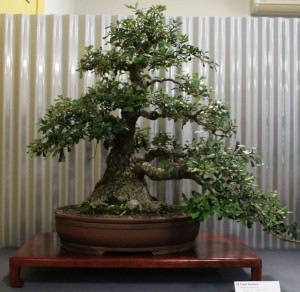
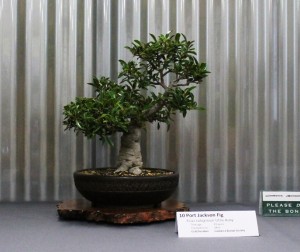
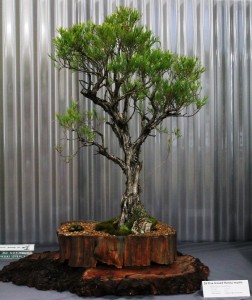
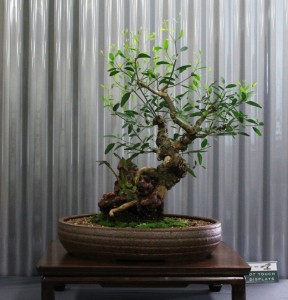
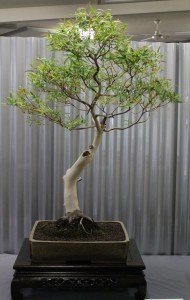
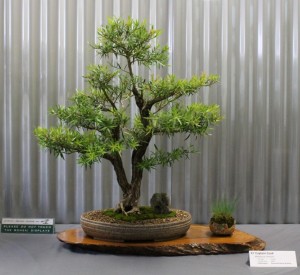
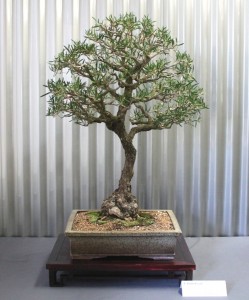
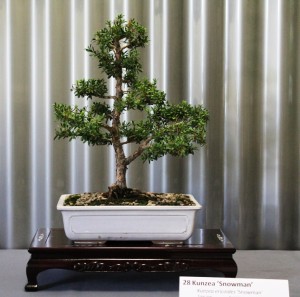
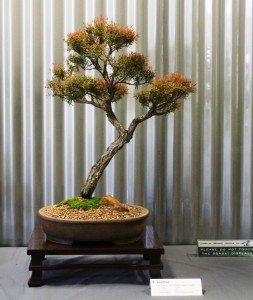
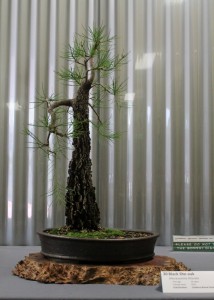
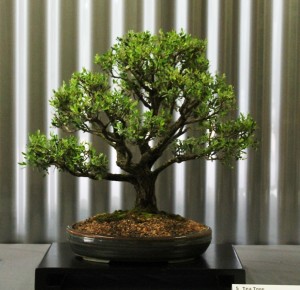
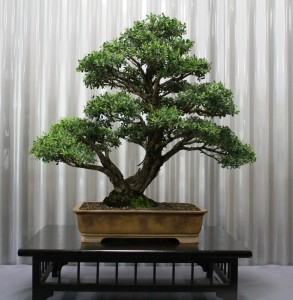
Good evening. Thanks a lot! Useful article!.
Hi just wondering if you’d give me advice e on bonsaiing a silky oak.
I just found a seedling in my garden and love the idea of a bonsai.
Thank. Oh I know nothing. Thanks